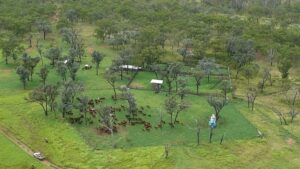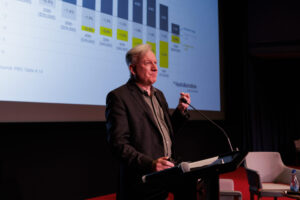by Richard Denniss
[Originally published in the Australian Financial Review, 01 April 2019]
The one thing that unites the major parties on climate change is that neither of them still believe carbon pricing is central to reducing greenhouse gas emissions. Indeed, the party sticking to the proposition that a carbon price is the most efficient way to reduce emissions is the Greens. That Business Council of Australia president Grant King wrote on these pages yesterday that a carbon price is the best way to tackle climate change suggests the BCA is backing the Greens on a key economic policy.
Welcome to the topsy-turvey land of modern Australian policy debate where so-called free market liberals like subsidies for coal investment and so-called socialist greens like market forces for pollution control. No wonder Labor’s climate policy has abandoned ideology and embraced pragmatism.
Labor hasn’t just dumped the idea that only a carbon price can drive emission reductions, it has dumped the idea that having one climate policy apply nationally to all industries and sectors of the economy makes sense.
Economically absurd
The idea that the right carbon price would result in optimal investment in renewables, optimal reductions in household petrol consumption and optimal reductions in methane emissions from livestock was always as economically absurd as it was politically unpalatable.
Seriously – back in 2009, Treasury actually modelled the impact of a carbon price on the burps and farts from sheep and concluded it would drive agricultural methane emissions down by eight million tonnes while output was increasing. To put it politely, the phoney precision of that modelling was all hot air.
Labor is now proposing to have different targets – and different policies – for different sectors. The most ambitious targets will be in the electricity sector, for the simple reason that renewables with storage are now cheaper to build than new coal-fired power stations. More polluters in the manufacturing sector will be covered under Labor’s scheme than by the Coalition, but trade-exposed manufacturers will face less ambitious emission reduction targets than domestic producers that face little competition. And for now, agriculture has been virtually exempted from emission cuts for the simple reason that it’s hard to get the sheep and cows to hold it in.
Similarly, Labor’s approach to trade in pollution credits is driven by pragmatism over ideology. Where the CPRS allowed full trading of all emission reduction obligations, the new plan would allow electricity generators who cut their emissions more than the minimum requirement to sell offsets to the manufacturing sector. This will likely speed up the rate of investment in renewable energy generation over and above Labor’s stated targets, while giving some manufacturers who find it hard to reduce emissions a degree of flexibility. The same is true for imported credits – Labor says it will allow “limited use” of imported offsets to provide flexibility.
Policy will evolve
Where the CPRS was based on the neo-liberal idea that markets in pollution credits – both domestic and international – would lead to least cost abatement, Labor’s climate policy embraces both modern economics and modern politics by placing explicit rules and limits on such trade. Just as the Liberals now favour the domestic production of submarines, the ALP now favours domestic production of emission reductions.
It’s inevitable that climate policy will evolve over the coming decades as the scientific and economic evidence of the harm of climate change becomes more persuasive, and the power of the fossil-fuel lobby becomes less important. But it is not inevitable that Australia must build new institutions every time we elect new governments. Luckily for Scott Morrison and Bill Shorten, the Senate stopped Tony Abbott’s attempt to abolish the Clean Energy Finance Corporation, ARENA and the Climate Change Authority. Labor is now promising to revitalise and reinvest in all of those agencies which is much quicker and cheaper than having to build them from scratch, again.
It’s now 12 years since John Howard and Kevin Rudd agreed that we need a carbon price, but since then Australia’s emissions have risen by 4 per cent. Rapid investment in renewables, the electrification of our car fleet, an end to large-scale land clearing, and increased energy efficiency in manufacturing can all be achieved without a carbon price – or wrecking the economy. In fact, a just transition to a low-carbon economy won’t wreck the economy, it will revitalise it.
Richard Denniss is chief economist at The Australia Institute
Between the Lines Newsletter
The biggest stories and the best analysis from the team at the Australia Institute, delivered to your inbox every fortnight.
You might also like
Here are 23 Times Carbon Offsets Were Found to be Dodgy
Carbon offsetting has received a lot of attention recently. As businesses and governments look to meet their climate targets, many are turning to carbon offsets. That is, they are paying someone else to reduce or avoid putting greenhouse gases into the atmosphere, so they don’t have to.
Stage 3 Better – Revenue Summit 2023
Presented to the Australia Institute’s Revenue Summit 2023, Greg Jericho’s address, “Stage 3 Better” outlines an exciting opportunity for the government to gain electoral ground and deliver better, fairer tax cuts for more Australians.
The carbon con killing koalas
The NSW Labor Government took office promising to create a vast koala sanctuary on the state’s mid-north coast – the Great Koala National Park. Despite the threat of koala extinction in the state, more than a year later the Great Koala National Park is yet to be established.



